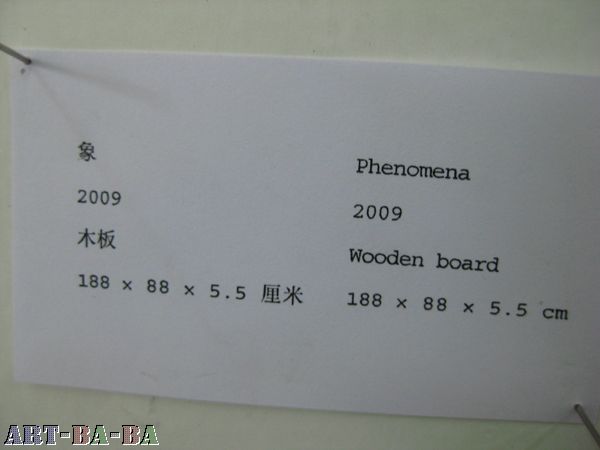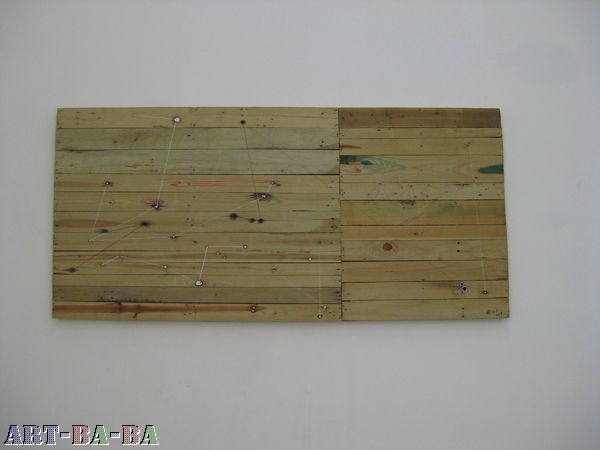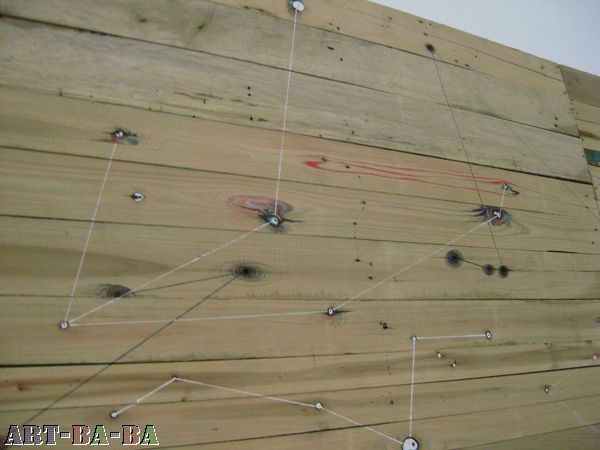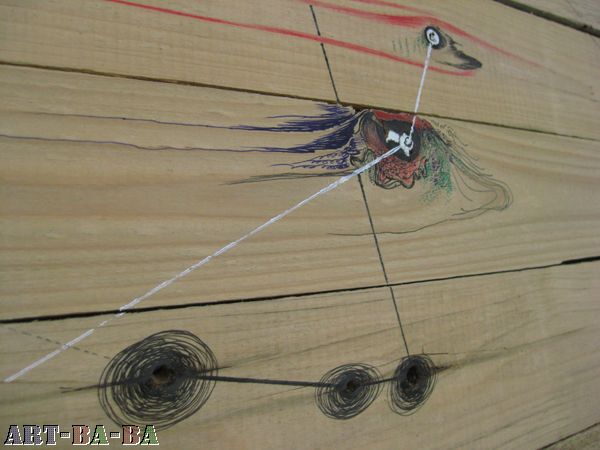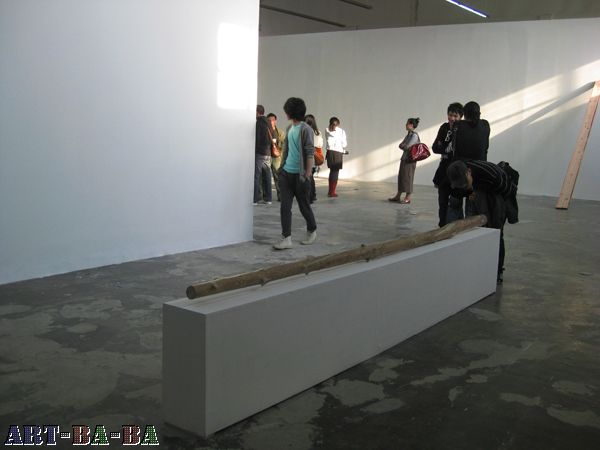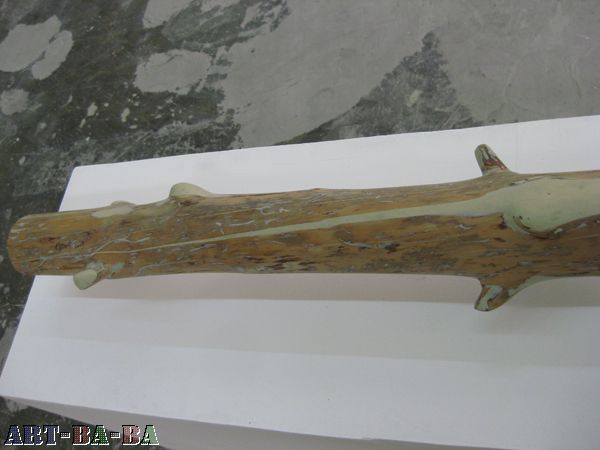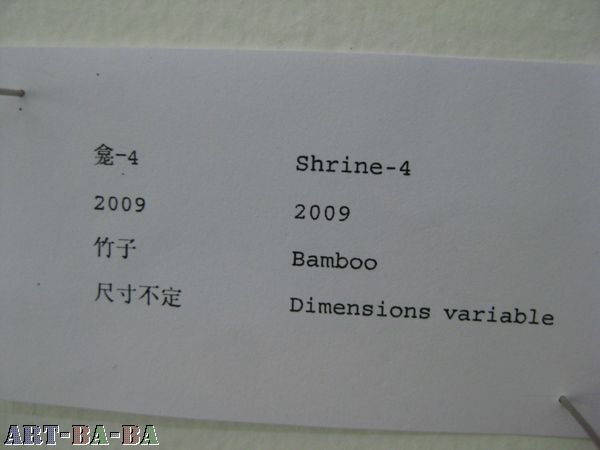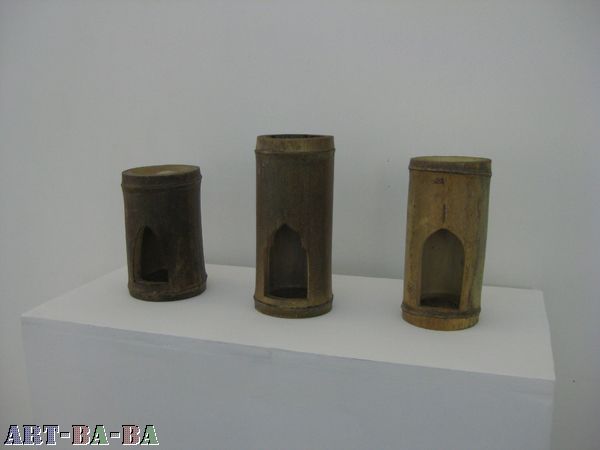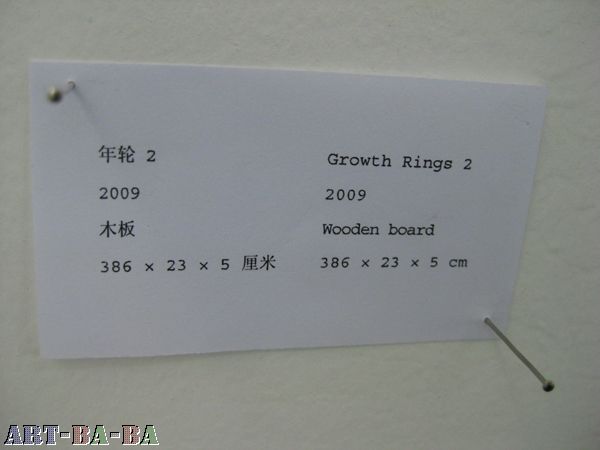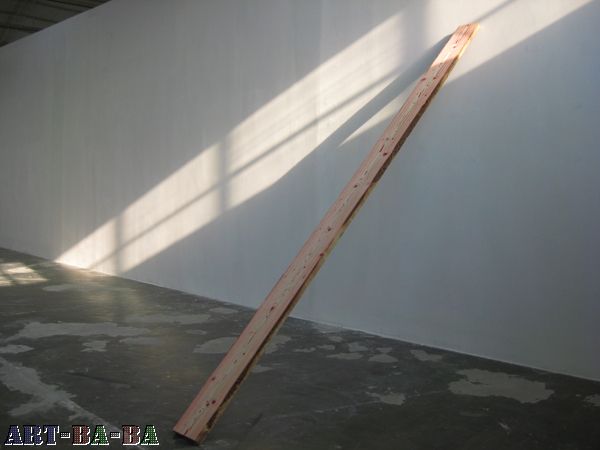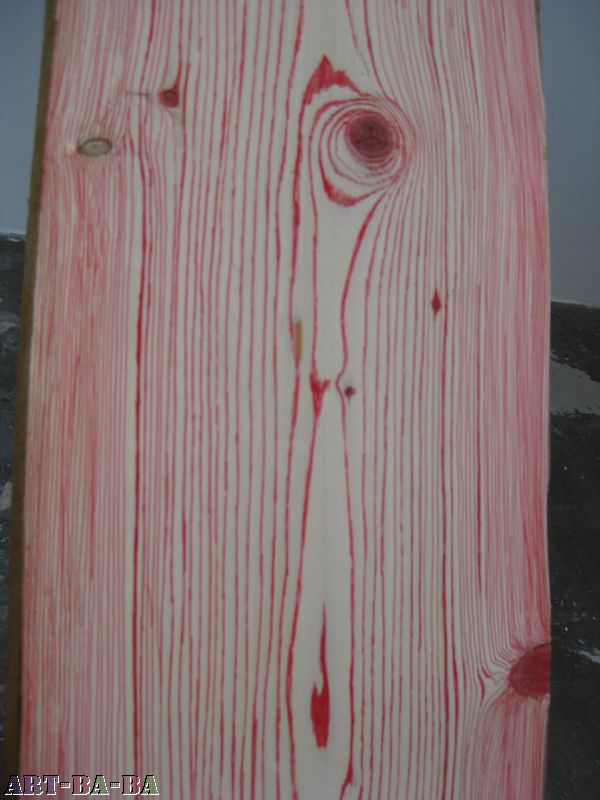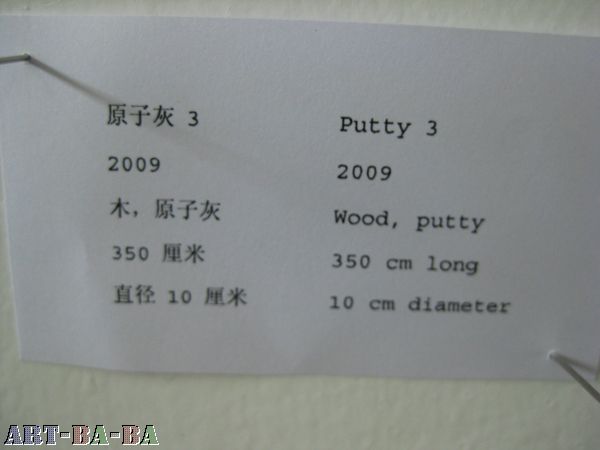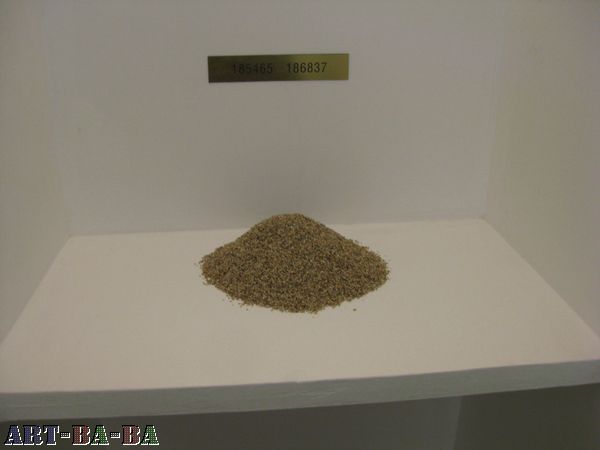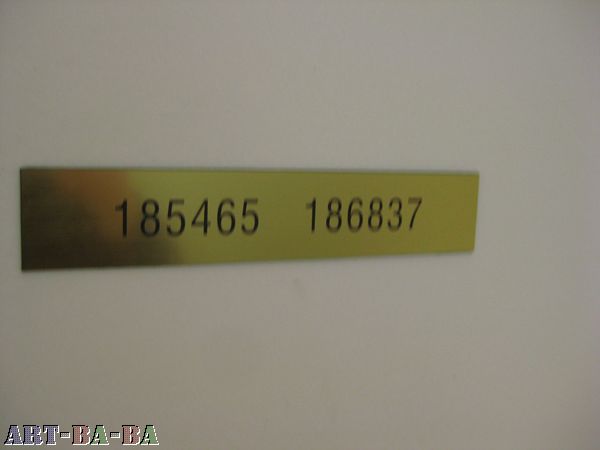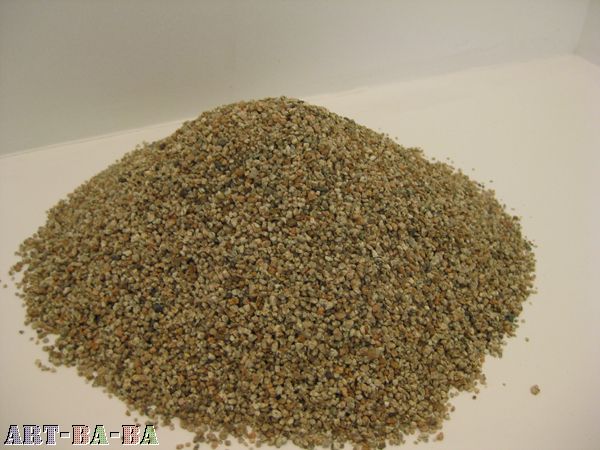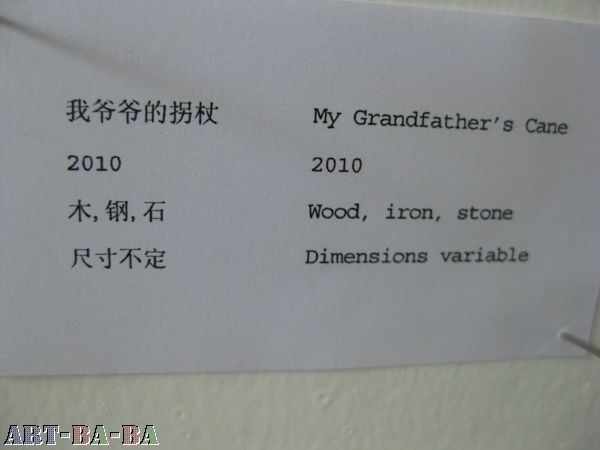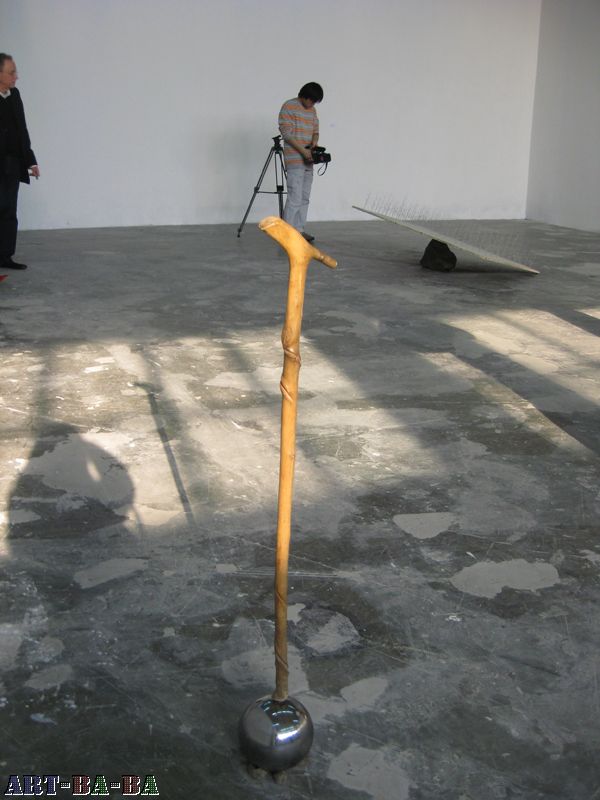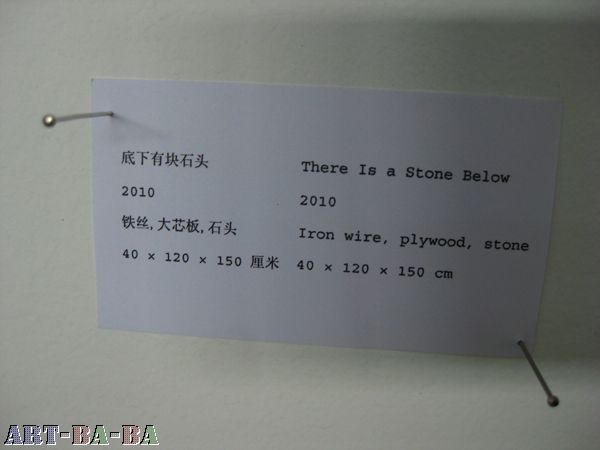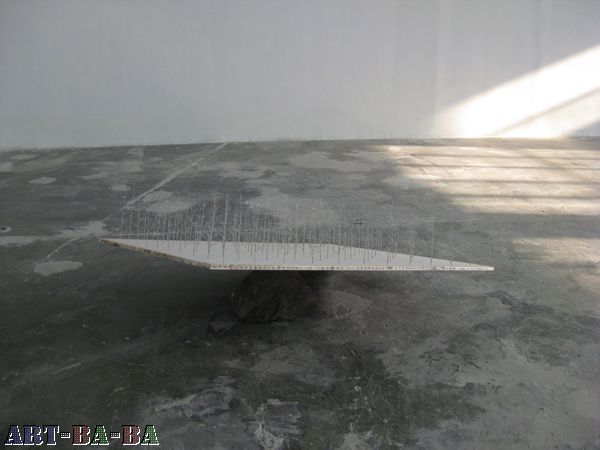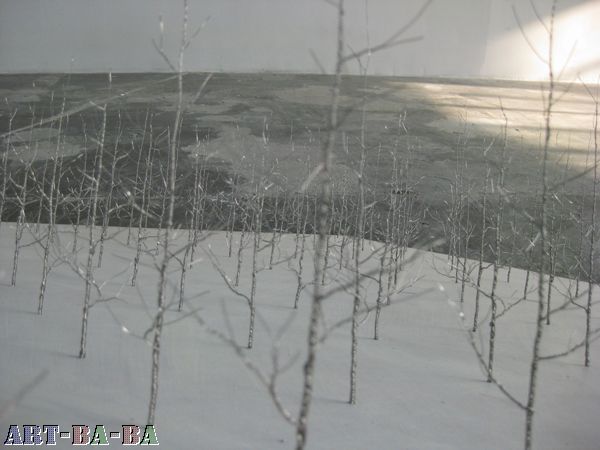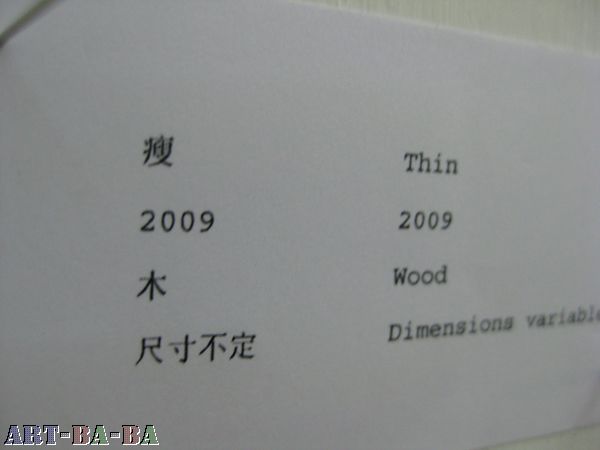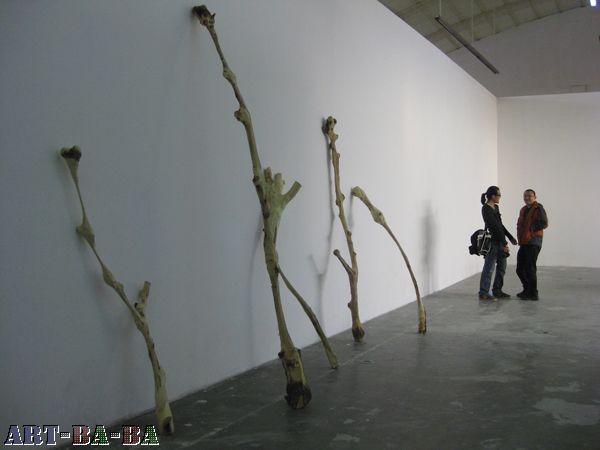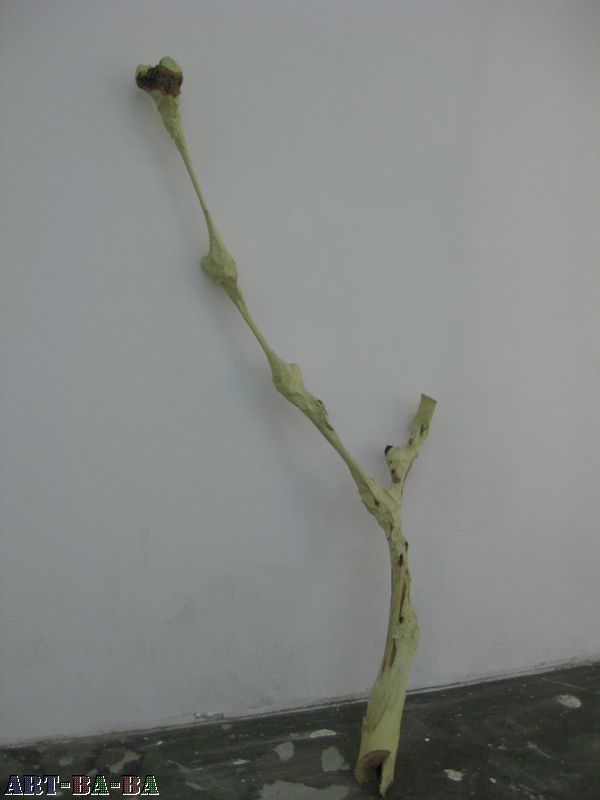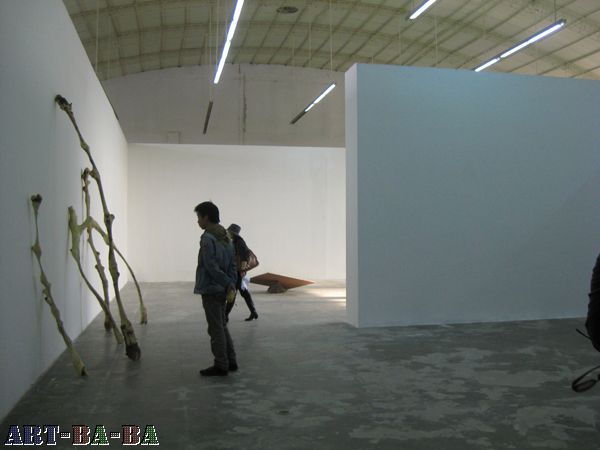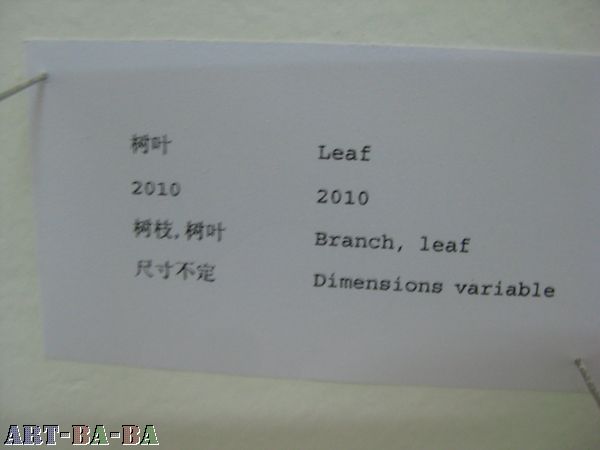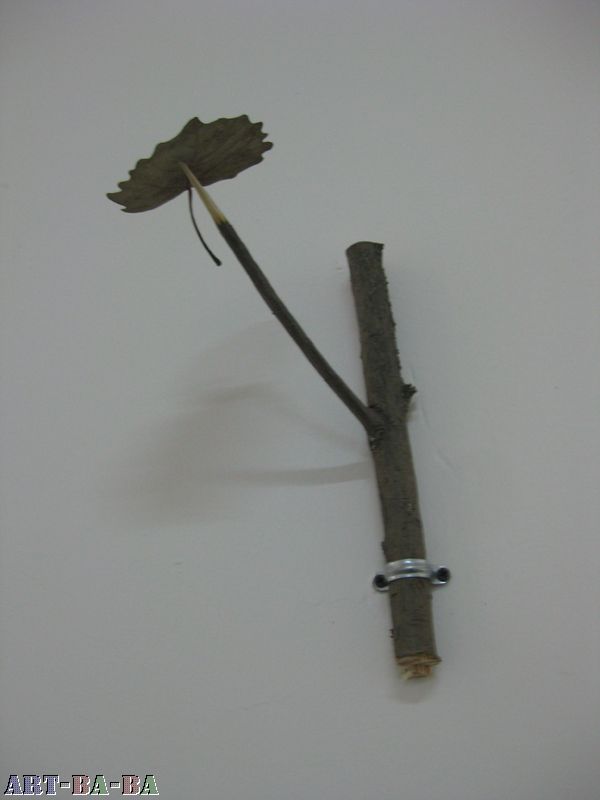[View] Trail by Yang Xinguang - Boers Li Gallery

Trail
A Yang Xinguang Solo Exhibition
Opening: 24 April, 2010, 4pm – 6pm
Dates: 24 April – 23 May
Time: Tuesday – Sunday 11am – 6pm
Place: Boers-Li Gallery, Caochangdi No. A-8, Beijing, China
text source: Boers - Li Gallery website
Boers-Li Gallery is pleased to announce the opening of a solo exhibition of work by young artist Yang Xinguang entitled Snake in the Grass, Lines of Ash on 24 April 2010. Born in 1980 in Hunan, Yang Xinguang graduated from the sculpture department of the Central Academy of Fine Art and currently resides in Beijing. As a well-received emerging artists, his practice focuses on the transformation and reexamination of stone, wood, and other such common natural media. This exhibition will include his latest work from 2009 and 2010, much of which emerges from materials reclaimed by the artist himself, including tree branches, wooden frames, pieces of rock, and so on. Within these works Yang Xinguang reseaches the challenging balance between the philosophical forms of the medium and the habituated lifestyles of modern man; the texture and innate physical properties of these objects make evident the restrained attributes immanent to their existence through a language of form intended to express its own unadorned intensities.
However, the forms taken by Yang Xinguang's works are not simple tools; the cultural connotations inherent to these materials are revealed and damaged in the artist's conscious process of manipulation. For example, the piece “Growth Rings” involves the tracing of the grain of a wooden board with a ballpoint pen, investigating the depth of its growth rings: the concept proffered by the artist and the material itself simultaneously bring the work into being. The piece “Counting Sand” appears to the audience simply as a pile of sand labeled with two numbers, the presence of which could either provide a concrete manifestation of truth or produce even greater confusion. In reality, both numbers represent the results discovered by the artist after counting the same pile of sand twice. Here, a precise version of truth as proved by experimentation is almost possible; what Yang Xinguang presents through the work is an unlimited process of development in search of truth.
Through the representation of the physical medium, the material plays an active role in the process of the construction of any given work. Similarly, the artist also plays an aggressively active role, presenting thought and emotion through analysis and transformation of material forms. The work “Thin” which leans against the wall of the exhibition space, appears as a group of people in the morbid grasp of starvation. The points of contact between the tree trunks and wall are tiny and fragile, as if these deformed tree bodies would crumble at the slightest touch. Following the forms of the larger knots and winding joints of the branches, the artist has carved away the majority of their wood, leaving behind the emotional substance of the moment at which he first seized the original material. All of the traces of this process of production still evident in the piece cause the wood to appear as if it had been subject to fierce abuse. The same technique appears again in the piece “Putty” in which discarded scrap wood is meticulously repaired as if it were a treasured artifact such that the initially trivial identity of the material now bears the profound mark of industrial civilization.
Within the scope of Yang Xinguang's consideration, the materials of his practice are not merely passive objects, but rather exist as things that carry focused affect and spirit. The progression from the physical to the spiritual causes simple material to act as a cultural vehicle, developing a unique artistic style of some profundity. In the work “My Grandfather's Cane,” a wooden cane is stuck to the top of an inordinately heavy steel ball supported upright on the ground by several small pieces of stone. The cane is imminently perched on a spherical body without the ability to maintain balance on its own such that the life it supports appears as heavy as the steel ball. The unique formal properties of the stones and ball, on the other hand, allow them to maintain a delicate balance that resembles the simultaneously contradictory and dependent relationship between life, death, and nature.
Most impressive is the sincerity that Yang Xinguang experiences in his work, penetrating the practice of art through a philosophy of nature rather than that of society. For the artist, no experience is insignificant. In the words of the German poet Rainer Maria Rilke, “No experience has been too unimportant, and the smallest event unfolds like a fate, and fate itself is like a wonderful, wide fabric in which every thread is guided by an infinitely tender hand and laid alongside another thread and is held and supported by a hundred others.” This homage to the course of nature permeates Yang Xinguang's exploration of art like a thread that appears only indistinctly, and then continues along unbroken.
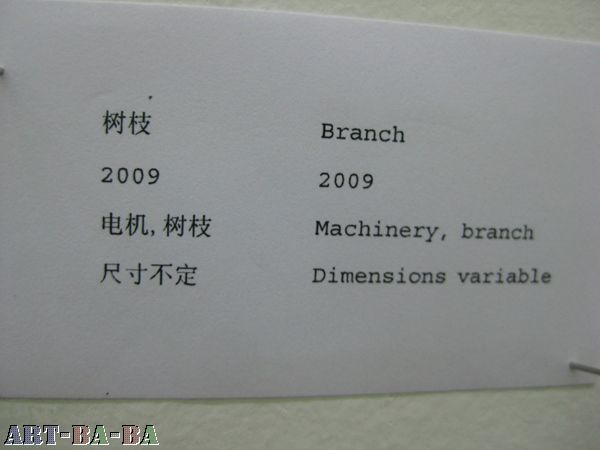
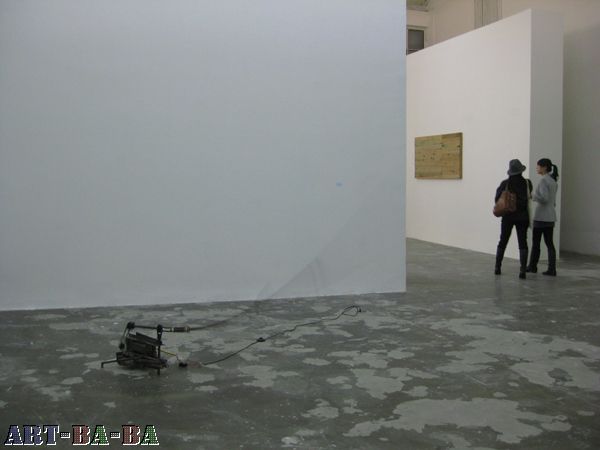
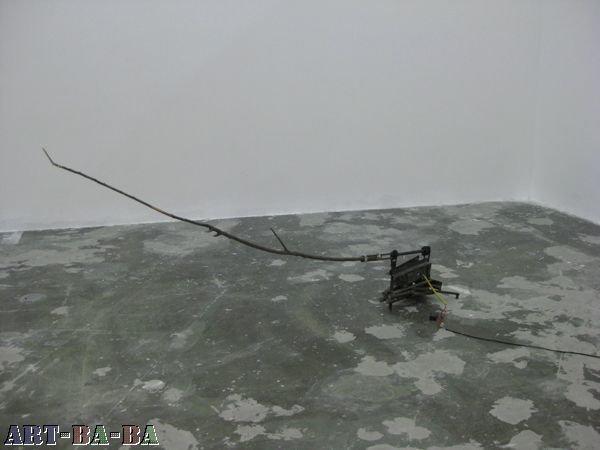
An installation where a branch controlled by a motor hits the ground repeatedly
